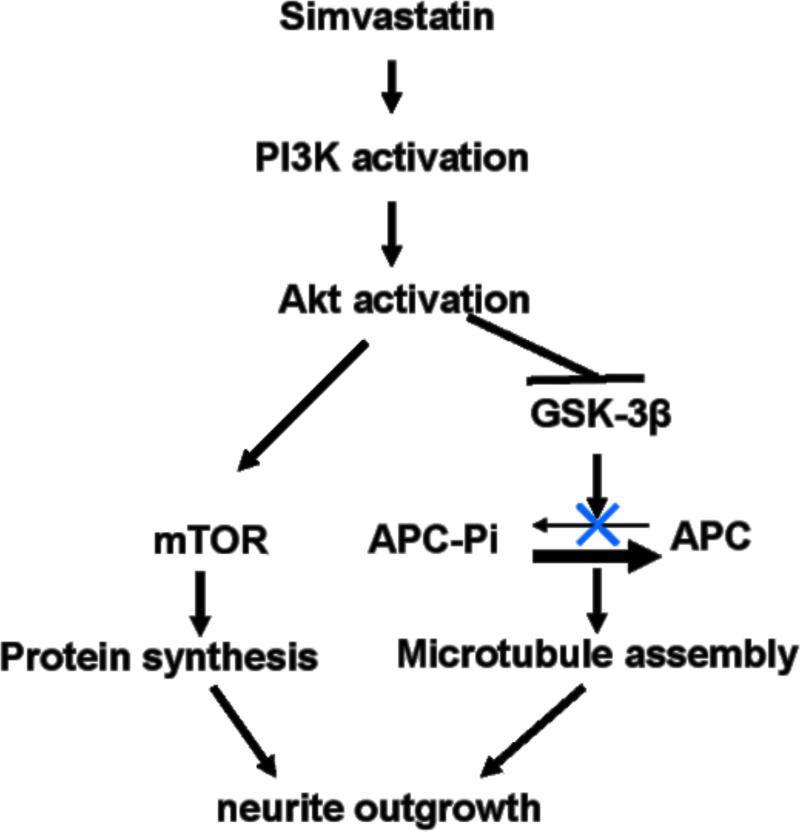Fig. 7.
A proposed model for the signaling pathways mediating the effect of simvastatin on neurite outgrowth. Simvastatin activates PI-3K, which in turn phosphorylates and activates Akt. Akt controls a host of signaling molecules, including GSK-3β and mTOR. Activation of mTOR by Akt leads to increased protein translation and protein synthesis in the injured neurons. On the other hand, Akt phosphorylates and inactivates GSK-3β. Inactivation of GSK-3β dephosphorylates APC, facilitates APC binding to microtubules and eventually leads to microtubule assembly. Both the protein synthesis and the microtubule assembly contribute to the simvastatin-induced neurite outgrowth. ‘→’ represents activation, ‘ ’ represents inactivation, and ‘x’ represents blockage of APC phosphorylation.

